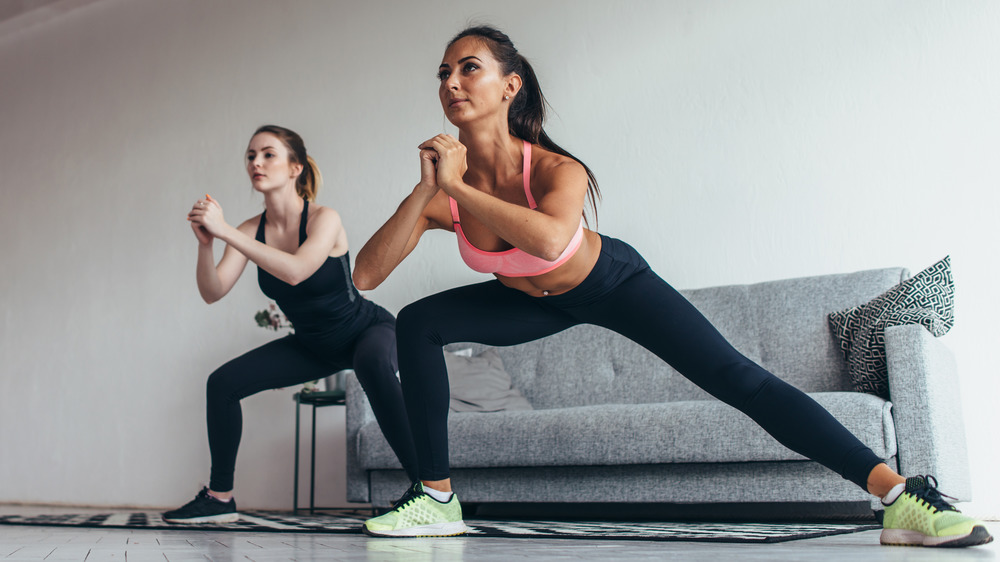When You Do These Lunges Every Day, This Is What Happens
Now that many have ditched the gym in favor of working out at home, simpler workout routines are likely to make a comeback. And, contrary to popular belief, even the simplest of movements have been shown to build a stronger body. In fact, side lunges in particular have been shown to be an incredibly effective way to target and strengthen multiple muscle groups that impact the way your body performs on a daily basis (per Shape).
Unlike the standard lunge, the side lunge, which, as its name suggests, is a lunge taken to the side rather than to the front, even has the ability to improve typical movements that your body makes throughout the day. This is due in large part to the fact that most of our movements are accomplished through only one plane of motion that requires only forward and backward movement. So, by introducing side lunges into your workout regimen, you are forcing your body to move in a completely different plane. Practicing movement in this different plane of motion can also improve performance by athletes in sports like basketball, tennis, baseball, and football that often require non-linear movements (per Livestrong).
The side effects of side lunges
Apart from simply promoting the flexibility of your hip flexors, side lunges can also improve the strength and power behind your glutes, adductors (those muscles on the inside of your thighs), hamstrings, and quadriceps. "The side lunge is a great exercise because it works the sides of the glutes (the gluteus medius), which are important stabilizer muscles for the hip joint, and are often under-appreciated," personal trainer Rachel Mariotti told Shape. Incorporating side lunges into a daily workout can adequately stretch and strengthen your hamstrings and the adductors that control your knee and hip movements. This means, in short, that side lunges can build up those muscles that help prevent weak knee and hip muscles that can cause injuries (via Livestrong).
The only real peril of side lunges exists for those who do not execute them correctly. "The mistake with lateral lunges is that people collapse at the knee instead of the hip," John Romaniello, trainer and founder of Roman Fitness Systems, told HuffPost. So, to ensure that you don't strain your muscles, be sure to bend at the waist, sit back in the lunge as you would do in a squat, and work to keep your back straight throughout the pose. Additionally, making sure that your knee tracks directly over your feet can prevent knee injuries.
As with anything else, incorporating side lunges into your daily workout is all about moderation – a few dozen reps per day can go a long way.

